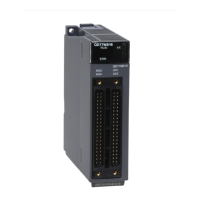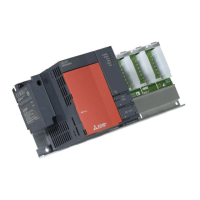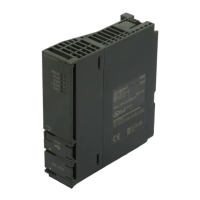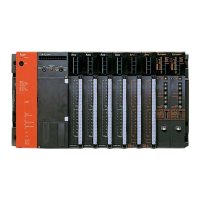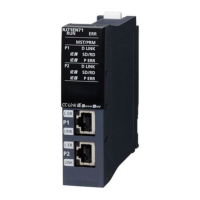7 APPLICATION INSTRUCTIONS
7.11 Character String Processing Instructions
529
7
■DBINDA
• Converts the individual digit numbers of decimal notation of the BIN 32-bit data designated by (S) into ASCII codes, and
stores the results into the area starting from the device designated by (D).
For example, if the value -12345678 has been designated by (S), the following would be stored into the area starting from (D):
• BIN data designated by (S) can be between -2147483648 to 2147483647.
• The operations results stored at (D) will be stored in the following way:
• In any of the following cases, an operation error occurs, the error flag (SM0) turns ON, and an error code is stored into SD0.
• The sign "20H" will be stored if the BIN data is positive, and the sign "2DH" will be stored if it is negative.
• The sign "20H" will be stored for the leading zeros of effective digits. (Zero suppression is conducted.)
• The data stored at the upper 8 bits of the device designated by (D)+5 differs depending on the ON/OFF status of SM701 (number of characters to output
select signal).
When SM701 is OFF: Stores "0"
When SM701 is ON: Stores "20H"
Error
code
Error details Q00J/
Q00/
Q01
QnH QnPH QnPRH QnU LCPU
4101 The range of the device specified in (D) exceeds the range of the
corresponding device.
+1
Sign
ASCII code for billions place
ASCII code for hundred-millions place
ASCII code for ten-millions place
b15 b8b7 b0
+2
When SM701 is OFF
When SM701 is ON
ASCII code for millions place
ASCII code for hundred-thousands place
ASCII code for ten-thousands place
ASCII code for thousands place
+3
+1
ASCII code for hundreds place
ASCII code for tens place
ASCII code for units place
0 or 20
H
0
20
H
Upper 16 bits Lower 16 bits
BIN 32-bit data
+4
+5
S
D
S
D
D
D
D
D
+1
2D
H
()20
H
(space)
20
H
(space)31
H
(1)
b15 b8b7 b0
+2
32
H
(2)33
H
(3)
34
H
(4)35
H
(5)
+3
36
H
(6)37
H
(7)
38
H
(8)
0 or 20
H
+4
+4
+1
12
3
4
5678
S S
D
D
D
D
D
D
0012
Number of significant digits20
H
034560

